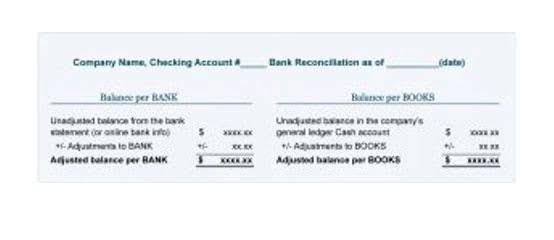
Filling out a deposit slip can be a daunting task, especially if you’re not familiar with the process. Each bank has its own set of rules for deposited funds, called a funds availability policy. You can use the preprinted deposit slips that come with checks you purchase or counter deposit slips furnished by your bank.

Why You Need to Know How to Deposit Cash Using a Deposit Slip?
By following these steps, you can safely deposit cash using a deposit slip. Handling cash and checks requires some basic steps to ensure accuracy and efficiency. You’ll typically need to include the amount in the boxes designated for cash deposits when depositing cash. When it comes to filling out a bank deposit slip, verifying the information you have entered is crucial. Any mistake or QuickBooks discrepancy can cause delays in processing your deposit, and in some cases, result in a rejected transaction.
Credit Card

Subtract the cash received, if any, from the subtotal and put the amount of money you’re depositing on the line usually marked “Total” or “Net Deposit.” Specify whether you wish your deposit to go to a checking, savings, or business account. Learn if you need a deposit slip to deposit a check with a bank or credit union, and discover alternative deposit methods. If you’re having trouble with the payee line, remember that it’s where you write the name of the person or business you’re depositing funds into.
Tips for Filling Out Deposit Slips for Business Accounts
- For example, consider a scenario where you deposit $500 into your checking account.
- The bank needs to know which account the deposit should be credited to.
- If you are depositing cash, you will need to fill in the amount of cash you are depositing.
- You might need to put cash and checks in an envelope and fill out a deposit slip, which a bank employee will then use to record your deposit manually.
It’s filled out much like a regular check, but it includes various deposit how to fill out a cash deposit slip kinds. Read on to find out how to properly fill out a checking deposit slip. By taking the time to verify and review the information on the deposit slip, you minimize the risk of errors or discrepancies. This attention to detail helps ensure a smooth and accurate processing of your deposit. The receipt you get when making a deposit only shows the total amount of cash. Deposit slips, by comparison, include information on the amounts and types of funds (e.g., cash and coins) that make up the total deposit.
- The account holder’s name is the name of the person who owns the account.
- To do this, follow the same steps as depositing a check, but make sure to fill in the cash boxes if you’re depositing cash.
- Double-check all your information before handing it over to the teller as well.
- However, if you don’t have access to these methods, cash deposit machines, online banking, and direct deposit are also good options.
- Depending on your bank and the type of deposit you are making, there may be additional fields on the deposit slip that you need to fill out.
- This will help ensure that the funds are properly credited to your account.
- Mobile banking apps and online banking may be vulnerable to hacking and other cyber threats.
Comparing Traditional and Electronic Deposit Slips
- Some ATMs may allow you to make a deposit using a deposit slip, but it is more common to make deposits at ATMs using an envelope with cash or checks.
- If you are only depositing money and do not want to get any cash, there is no need to sign the deposit slip.
- In this article, we’ll include detailed instructions on how to fill out a deposit slip, as well as the benefits of using these forms.
- When you fill out a cash deposit slip, you’re providing the bank with important information that helps them process your deposit correctly.
- This is important for keeping track of when the deposit was made and for reconciling the account.
- Deposit slips play a crucial role in this aspect, serving as a physical token of the transaction that adds a layer of verification to the process.
Filling out the check section of a deposit slip is a crucial step in the process. This is where you’ll write the amount of each check you’re depositing. You can use a deposit slip to ensure your money is properly accounted for when you put it in the bank.

The contents of this article/infographic/picture/video are meant solely for information purposes. The contents are generic in nature Law Firm Accounts Receivable Management and for informational purposes only. It is not a substitute for specific advice in your own circumstances. The information is subject to updation, completion, revision, verification and amendment and the same may change materially. Please consult your financial advisor before making any financial decision.